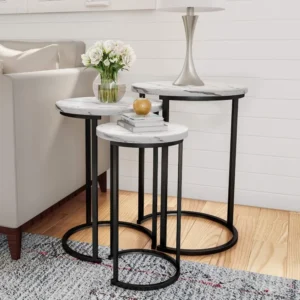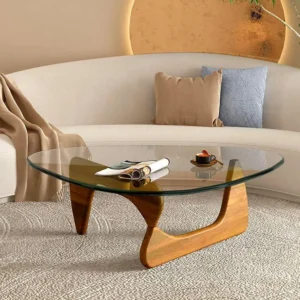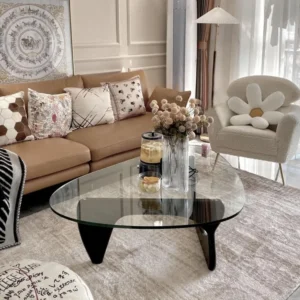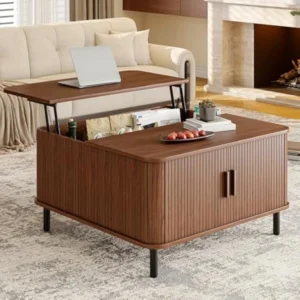Understanding the Impact of Coffee Table Size in Small Living Spaces
In the world of interior design, few spaces present as much of a challenge as a small living room. Typically measuring under 200 square feet (18.6 square meters), these compact areas require thoughtful furniture selection to maintain both functionality and visual harmony.
Coffee tables serve as more than just convenient surfaces – they act as both functional centerpieces and aesthetic anchors that can make or break your living room’s overall feel. When properly sized, a coffee table creates balance and enhances the flow of your space. Conversely, an improperly sized table can create both visual and physical congestion, making your already limited space feel cramped and uncomfortable.
The impact of coffee table sizing extends beyond appearances. In compact spaces, every inch matters when it comes to traffic flow and usability. An oversized coffee table can create awkward pathways around your seating area, while one that’s too small might fail to serve its functional purpose effectively.
Spatial psychology research shows that balanced proportions between furniture pieces create a sense of harmony and order. This is particularly important in small spaces where cluttered or disproportionate elements can quickly create a feeling of chaos.
Consider this scenario: In a 150-square-foot living area, a 48-inch coffee table dominates the central space, forcing guests to squeeze past furniture and creating a visually overwhelming effect. The same room with a 36-inch table maintains adequate surface area while allowing comfortable pathways and visual breathing room.
Understanding intelligent black mid-century coffee tables and their design principles can help you make more informed choices for your small space. Additionally, knowing the best shape coffee table for small spaces will significantly impact your room’s functionality and appearance.
Essential Dimension Guidelines: The Perfect Coffee Table Size Formula
When selecting a coffee table for a small living room, following specific dimensional guidelines can help ensure your choice enhances rather than detracts from your space. These tried-and-true rules create visual harmony and practical functionality:
The Height Rule: Your coffee table should sit 1-2 inches (2.5-5 cm) lower than your sofa’s seat height. This proportion creates visual balance while ensuring comfortable use when reaching for items from a seated position.
The Length Rule: For optimal visual proportion, select a coffee table that’s approximately two-thirds the length of your sofa. This creates balanced negative space while providing adequate surface area.
The Width Consideration: In small rooms, width becomes particularly critical. The table should allow at least 12-18 inches (30-46 cm) of clearance between it and surrounding furniture. This prevents a cramped appearance while maintaining functionality.
The Clearance Rule: Maintain 12-18 inches (30-46 cm) between your coffee table and sofa/seating. This distance provides comfortable leg room while keeping items within easy reach.
Standard Sizes for Small Living Rooms
| Dimension | Recommended Range | Ideal for Small Spaces |
|---|---|---|
| Height | 16-18 inches (40-46 cm) | 16 inches (40 cm) |
| Length | 30-48 inches (76-122 cm) | 30-36 inches (76-91 cm) |
| Width | 18-24 inches (46-61 cm) | 18-20 inches (46-51 cm) |
| Clearance | 12-18 inches (30-46 cm) | 12-14 inches (30-36 cm) |
These measurements provide a solid starting point, but remember that your specific room configuration may require adjustments. The key is maintaining proportional relationships between furniture pieces rather than adhering strictly to absolute numbers.
For ready-to-shop options that follow these guidelines, browsing mid-century modern small coffee tables can save time while ensuring proper proportions. For more detailed guidance on specific shapes, the square table size guide for small rooms offers valuable insights.
Best Coffee Table Shapes for Small Living Rooms
The shape of your coffee table dramatically impacts both the function and feel of your small living room. Different shapes offer unique advantages depending on your specific space constraints and seating arrangement:
Round Tables: Perhaps the most small-space friendly option, round coffee tables eliminate sharp corners that can disrupt traffic flow and pose safety hazards. Their soft, circular form creates natural pathways around the seating area and visually softens the room. Ideal diameters range from 28-36 inches (71-91 cm), with 30-32 inches (76-81 cm) often providing the perfect balance of surface area and space efficiency.
Oval Tables: Combining the space efficiency of rectangular tables with the flow-friendly benefits of rounded edges, oval coffee tables offer an excellent compromise. They work particularly well with longer sofas or in rectangular rooms, providing generous surface area without dominating the space visually.
Rectangular Tables (Narrow Profile): When selected with appropriate proportions, narrow rectangular tables can maximize surface area while minimizing footprint. Look for options measuring 18-20 inches (46-51 cm) in width to maintain adequate pathways. These work especially well with standard sofas and in rooms with a more linear layout.
Square Tables: Best suited for balanced seating arrangements like four chairs or a love seat with two accent chairs, square tables create a sense of symmetry. However, they can feel bulky in very small spaces unless they’re compact (around 24-30 inches/61-76 cm per side) or feature a light visual weight through material choice.
Nested or Tiered Tables: Offering unmatched flexibility, nesting tables can be expanded when needed for entertaining or tucked away to create more floor space. Their adjustable footprint makes them ideal for rooms that serve multiple purposes or frequently change configurations.
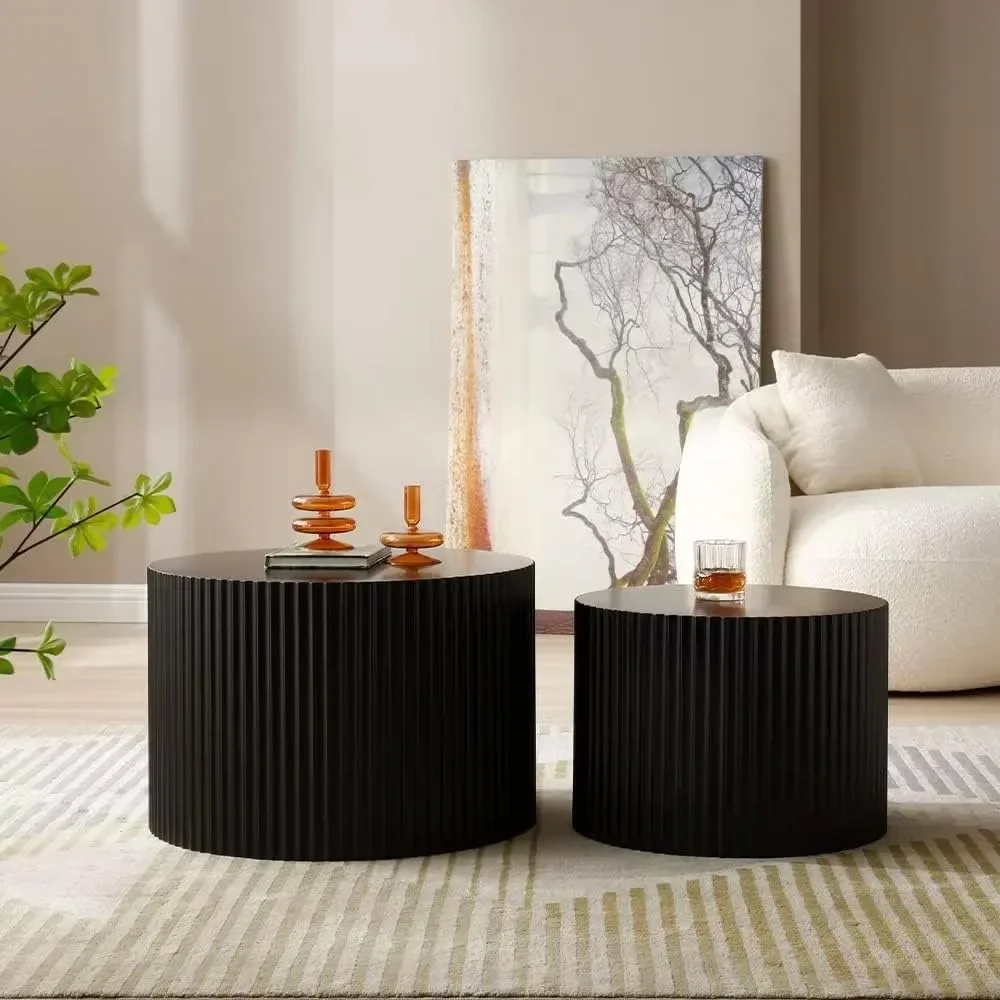
For L-shaped sectionals, oval or rectangular tables often work best, aligning with the extended seating arrangement. Conversely, loveseats and apartment-sized sofas pair beautifully with round tables, creating a cozy, conversational setup.
Exploring mid-century modern round coffee tables can provide excellent options for small living rooms, while mid-century modern nesting coffee tables offer versatile solutions that adapt to changing needs.
Space-Enhancing Materials: What Your Coffee Table Should Be Made Of
The material of your coffee table significantly impacts how it contributes to or detracts from your small living space. Strategic material choices can create an illusion of openness and light:
Glass and Acrylic: Transparent and translucent materials allow light to flow through rather than being blocked, creating a sense of openness. These materials visually “disappear,” reducing the perceived mass of the furniture. Glass tops with slender legs or acrylic pieces give you functional surface area without the visual weight.
Light-Colored Woods: Pale oak, ash, maple, or whitewashed finishes reflect rather than absorb light, brightening your space. These lighter tones create less visual heaviness than their darker counterparts while maintaining natural warmth.
Metal Frames: Slender metal structures, particularly those with thin profiles in brass, chrome, or black finishes, create architectural interest without bulk. When combined with glass or slim wooden tops, they provide stability without visual heaviness.
Mixed Materials: Thoughtful combinations can maximize both aesthetic appeal and space-enhancing properties. A glass top with a wooden base combines openness with warmth, while metal and wood pairings offer durability with style.
Materials to Avoid: In small spaces, steer clear of massive dark woods, chunky concrete, or oversized rustic pieces that can overwhelm the room. These heavier elements tend to anchor the eye downward and make spaces feel smaller.
The reflective quality of glass and polished surfaces helps distribute light throughout the room, making the space feel larger and more open. Even small rooms can accommodate substantial pieces if they’re rendered in materials that don’t create visual heaviness.
For specific options that incorporate these principles, mid-century modern glass top coffee tables offer excellent solutions for visually expanding your space. Understanding the features of black mid-century coffee tables can also help you make design choices that balance visual weight with style.
Multi-Functional Coffee Tables: Space-Saving Solutions
In small living rooms, furniture that performs multiple functions isn’t just convenient—it’s essential. Multi-functional coffee tables combine style with practicality, maximizing your limited square footage:
Storage Coffee Tables: Hidden compartments, drawers, and shelving within your coffee table can significantly reduce clutter. These designs offer discrete storage for remotes, magazines, throws, and other living room essentials that might otherwise create visual noise.
Lift-Top Designs: These ingenious tables feature tops that raise to comfortable lap height, creating instant work surfaces or dining areas. When lowered, they function as traditional coffee tables. This adaptability is perfect for apartments or homes where dining space is limited.
Nesting Tables: Sets of two or three tables of graduated sizes stack neatly together, occupying minimal space when not in use. When entertaining or requiring additional surface area, they can be separated and distributed around the room.
Ottoman Coffee Tables: Combining seating, storage, and surface functionality, ottoman tables offer exceptional versatility. Look for designs with firm, flat tops suitable for holding drinks (potentially with trays) and hinged lids concealing storage within.
Folding/Collapsible Options: Tables that can be partially or completely collapsed provide the ultimate in space-saving flexibility. These work especially well in rooms that need to accommodate different activities at different times.
C-Tables and Slide-Under Designs: These alternatives slide partially under your sofa, requiring less floor space while keeping surfaces within easy reach. They’re ideal for extremely tight spaces where even a small conventional coffee table might impede movement.
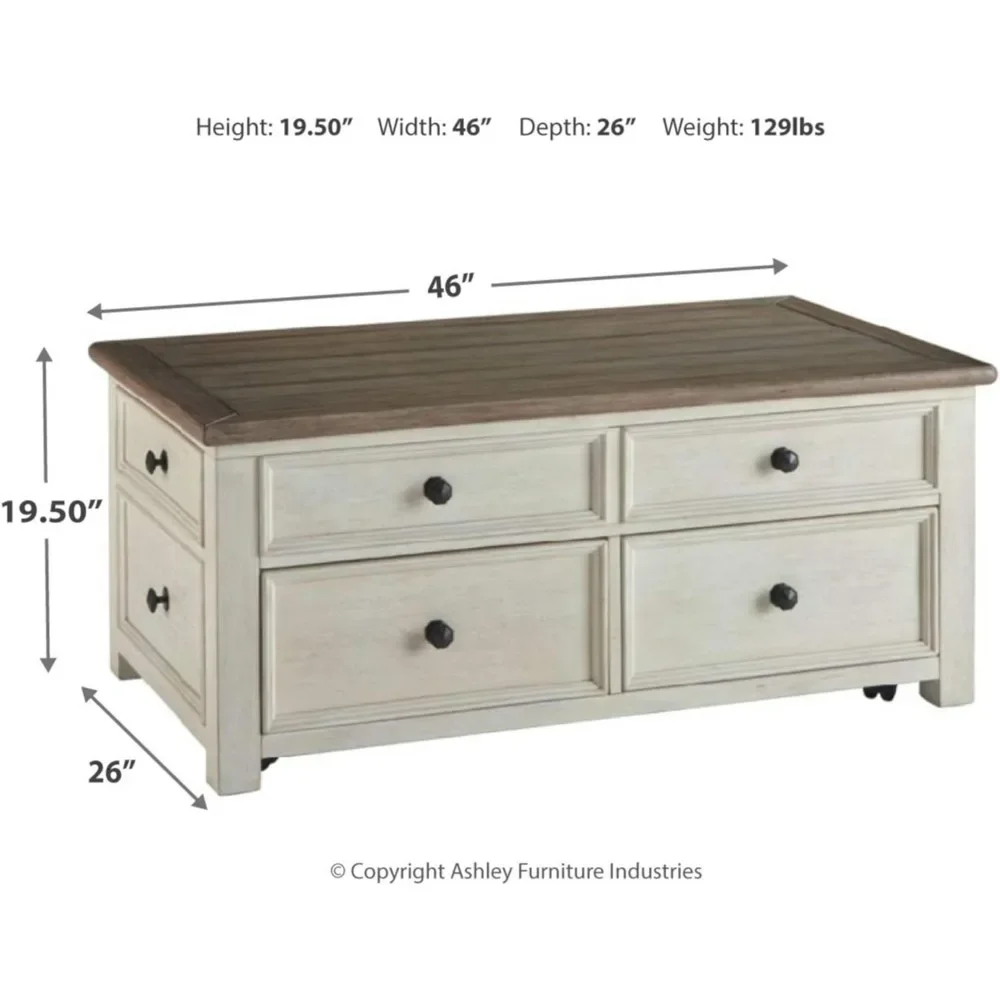
Mid-Century Modern End Table Sets of 2, Mid-Century Modern Square Side & End Tables, Mid-Century Modern White Side & End Tables
$348.24 Select options This product has multiple variants. The options may be chosen on the product pageMid-Century Modern Nesting Side & End Tables, Mid-Century Modern Nesting Table Sets, Mid-Century Modern Round Side & End Tables
Price range: $239.35 through $273.06 Select options This product has multiple variants. The options may be chosen on the product pageMid-Century Modern End Table Sets of 2, Mid-Century Modern Walnut Side & End Tables
Price range: $978.89 through $1,957.38 Select options This product has multiple variants. The options may be chosen on the product pageMid-Century Modern Glass Top Coffee Tables, Mid-Century Modern Glass Top Side & End Tables
$460.58 Select options This product has multiple variants. The options may be chosen on the product pageMid-Century Modern Glass Top Coffee Tables, Mid-Century Modern Vintage Coffee Tables, Mid-Century Modern Vintage Side & End Tables
$725.36 Select options This product has multiple variants. The options may be chosen on the product pageMid-Century Modern Lift Top Coffee Tables, Mid-Century Modern Square Coffee Tables
$454.73 Select options This product has multiple variants. The options may be chosen on the product page
These functional designs prove particularly valuable in specific scenarios. Lift-tops excel in homes where remote work occurs in the living room, while storage tables are invaluable for homes without adequate closet space. Most multi-functional designs maintain compact footprints similar to traditional coffee tables (around 36 inches/91 cm in length) but offer significantly enhanced utility.
Hearth Forms offers excellent mid-century modern lift-top coffee tables that combine functionality with distinctive mid-century aesthetics. For more ideas on maximizing functionality, exploring black mid-century coffee tables provides additional strategies for efficient use.
Coffee Table Placement Strategy for Small Rooms
Strategic placement of your coffee table can significantly impact how spacious your small living room feels and functions. Consider these placement approaches:
Centered vs. Offset Positioning: While conventional wisdom suggests centering the coffee table in front of the sofa, small rooms sometimes benefit from slight asymmetry. Consider offsetting the table slightly toward the room’s most common entry point to improve flow.
Balanced Negative Space: Aim for relatively equal “breathing room” around all sides of the table. This balanced negative space creates visual harmony and prevents the arrangement from feeling lopsided or cramped.
Traffic Flow Mapping: Before finalizing placement, map the natural pathways through your room. Maintain clear walkways of at least 30 inches (76 cm) width to allow comfortable movement. Position your coffee table to complement rather than obstruct these natural paths.
Alternative Arrangements: Consider “floating” your furniture away from walls in a cohesive grouping with the coffee table at its center. This can sometimes create more usable space than pushing everything against walls, particularly in square rooms.
Zoning Techniques: In open-concept small spaces, your coffee table can help define distinct functional areas. Positioning it properly in relation to your seating creates a visual boundary for the living area without requiring physical dividers.
The most successful coffee table placements consider both static furniture and the dynamic movement of people through the space. By leaving adequate pathways while maintaining functional proximity to seating, you create a room that feels organized and purposeful rather than cramped.
Learning more about styling black mid-century coffee tables can provide additional insights into optimal placement strategies that enhance your room’s overall design.
Visualization Techniques: Confirming Your Coffee Table Choice
Before investing in a coffee table for your small living room, use these visualization techniques to ensure it will work in your space:
Painter’s Tape Outline: Use painter’s tape to mark the exact dimensions of your prospective coffee table on the floor. Live with this outline for a few days, observing how it affects your movement through the space and whether it feels appropriately sized.
Cardboard Mockup: Create a three-dimensional representation by cutting and assembling cardboard boxes to the exact dimensions of your potential table. This helps you visualize not just the footprint but also how the height and mass will feel in relation to your other furniture.
- Find a large cardboard box or multiple flat pieces
- Cut to the exact dimensions of your prospective table
- Assemble with tape to create a 3D form
- Position in your intended location
- Live with it for several days to test functionality
Digital Visualization: Use free room planning apps like Roomstyler, Planner 5D, or even the AR features in some furniture retailers’ apps to virtually place coffee tables in your space. Take measurements of your room and existing furniture for accurate digital recreation.
Traffic Flow Testing: Once you have a physical mockup in place, practice walking through the room following your typical paths. Pay attention to whether you naturally avoid the mockup or find yourself bumping into it.
Photographic Perspective: Take photos of your room with the mockup in place from different angles and doorways. Sometimes photos reveal spatial relationships that aren’t immediately apparent when you’re in the room.
These visualization techniques connect directly to the decorating of black mid-century coffee tables, helping you envision not just the table itself but how it will fit into your overall design scheme.
Common Coffee Table Sizing Mistakes to Avoid
Even with careful planning, certain coffee table sizing mistakes frequently occur in small living rooms. Being aware of these common errors can help you avoid them:
Oversized Tables: Perhaps the most prevalent mistake is selecting a coffee table that’s simply too large for the space. Signs include difficult navigation around the table, a visually overwhelmed room, and the table extending beyond the sofa’s edges. When in doubt, err on the slightly smaller side.
Undersized Options: Conversely, tables that are too small appear insubstantial and fail to anchor the seating area effectively. A coffee table should have enough surface area to be functional—typically able to hold a few books, beverages, and decorative elements without feeling cluttered.
Height Mismatches: Tables significantly taller or shorter than your sofa’s seat height create ergonomic issues. Too tall, and they become awkward obstacles; too low, and users must bend uncomfortably to reach items. The ideal coffee table sits 1-2 inches (2.5-5 cm) below seat height.
Inadequate Clearance: Failing to leave sufficient space (12-18 inches/30-46 cm) between the table and surrounding furniture forces people to squeeze through tight passages or shuffle sideways. This restricted movement makes the entire room feel cramped.
Form Over Function: Selecting a table based solely on aesthetic appeal without considering how it will be used often leads to dissatisfaction. A beautiful table that doesn’t meet your practical needs (surface area, storage, height) quickly becomes an attractive nuisance.
Quick checklist to avoid these mistakes:
– Measure your space and seating before shopping
– Leave 12-18 inches (30-46 cm) between the table and seating
– Ensure the table height is 1-2 inches (2.5-5 cm) below seat height
– Select a length approximately 2/3 of your sofa’s length
– Consider how you’ll primarily use the table
For more guidance on functional furniture selection, the principles of Scandinavian table design for functional living rooms offer valuable insights that complement these guidelines.
Alternative Solutions: When a Traditional Coffee Table Won’t Work
Sometimes, despite careful consideration, a traditional coffee table simply isn’t the best solution for an extremely small living room. Consider these creative alternatives:
Side Table Clusters: Group two or three small side tables (typically 18-24 inches/46-61 cm tall) to create a modular coffee table alternative. These can be separated for individual use when needed or clustered to create a larger surface. This approach offers exceptional flexibility for changing needs.
Wall-Mounted Solutions: In extremely tight spaces, consider wall-mounted drop-leaf tables or floating shelves that provide surface area without requiring floor space. These can be folded away when not in use, completely freeing up the central area.
Floor Poufs and Cushions: Soft, flat-topped floor poufs can serve as both occasional tables (with a tray on top) and additional seating. Their lightweight nature allows for easy rearrangement when space needs change.
Console Tables: A narrow console positioned behind a floating sofa or along a nearby wall can provide the surface functionality of a coffee table without occupying the central space. Look for designs 10-12 inches (25-30 cm) deep to maintain a slim profile.
Repurposed Furniture: Consider repurposing items like vintage trunks, stacked suitcases, or small benches as coffee tables. These often offer built-in storage while adding character through unexpected application.

For homes with extremely limited square footage, these alternatives can provide the function of a coffee table while preserving precious open space. The key is identifying your primary needs (surface area, storage, etc.) and finding creative ways to meet them without a conventional table.
Exploring mid-century modern side and end tables can provide inspiration for alternative table configurations that maintain style while maximizing space.
Expert Tips: Selecting the Perfect Coffee Table for Your Small Living Room
Interior designers and small-space experts offer these consolidated tips for making the optimal coffee table selection:
• Prioritize Your Needs: Before considering style, identify your primary functional requirements. Do you need storage, work surface, display space, or simply a place for beverages? Let these needs guide your initial selection criteria.
• Consider Visual Weight: Beyond physical dimensions, evaluate how “heavy” the table appears. Glass, acrylic, and open structures appear lighter than solid wood or stone, even at identical dimensions.
• Balance Proportion and Scale: Select a coffee table that relates proportionally to your seating. For small sofas under 72 inches (183 cm), tables 30-36 inches (76-91 cm) long typically create the most balanced appearance.
• Future-Proof Your Selection: Choose adaptable designs that can work in different arrangements should you rearrange your space or move to a new home. Versatile shapes and sizes offer greater longevity.
• Invest Wisely: Quality construction ensures longevity, but target your budget toward pieces that offer the best combination of function, form, and durability rather than size alone. A well-made smaller table often outperforms a cheaper larger one.
• Test Before Committing: Whenever possible, bring home samples, create mockups, or use visualization techniques before purchasing to ensure your choice works in practice as well as in theory.
These expert insights complement the design principles found in black mid-century coffee table design, helping you make informed decisions that enhance both form and function in your small living space.
How to Make a Coffee Table Feel Right in a Small Space
Once you’ve selected the appropriate coffee table, thoughtful styling can further enhance its integration into your small living room:
Embrace Negative Space: Resist the urge to cover the entire surface with decorative items. Leaving portions of the table empty creates visual breathing room that makes the entire space feel less cluttered.
Use Trays for Organization: Place smaller items on a tray that contrasts slightly with the table surface. This creates a cohesive grouping that can be easily moved when you need the full surface area.
Apply the Rule of Three: Limit decorative groupings to three items of varying heights and textures for visual interest without overwhelming the space. For example, a tall candle, medium plant, and low stack of books create dynamic dimension.
Create Vertical Interest Carefully: When adding taller decorative elements, ensure they don’t block sightlines across the room. Objects that impede views make spaces feel smaller and more closed off.
Maintain Functional Surface Area: Always preserve some usable space for drinks, books, or other practical items. A coffee table that’s purely decorative quickly becomes impractical for daily life.
Consider Scale of Accessories: Choose smaller-scale accessories that complement rather than dominate the table. Miniature plants, appropriately sized books, and modest decorative objects maintain proportion with your compact space.
The styling approach should honor both the coffee table’s function and its contribution to your overall design scheme. Well-styled coffee tables become natural focal points that enhance rather than overwhelm small living rooms.
For additional styling inspiration, exploring black coffee tables in mid-century interiors provides examples of balanced decorative approaches that complement this iconic design style.
By following these guidelines for coffee table selection and placement, you can ensure that this essential piece enhances rather than detracts from your small living room. The perfect coffee table not only serves your practical needs but also contributes to a harmonious, well-proportioned space that feels both comfortable and stylish.



